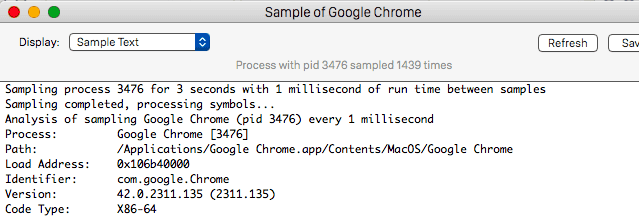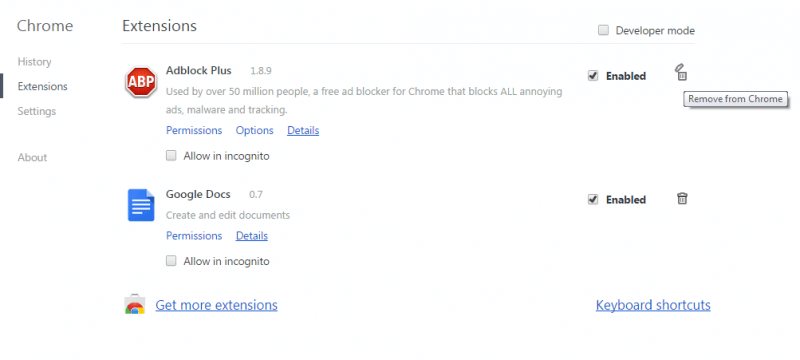System is infected
“System is infected” is a form of undesirable and potentially unsafe software that can be described as a Mac browser hijacker. “System is infected” and hijackers like it are aimed at putting ads on your screen during browsing sessions and also suddenly redirecting your searchers to unfamiliar sites.

Annoying browser extension-like apps like “System is infected” are everywhere and it is really easy to slip up and get one such app installed on your computer and added to your Safari, Google Chrome or Mozilla Firefox browser (or to any other browser that might have been installed on your Mac). If you land such an application, it is likely that you’d start noticing certain rather unpleasant alterations and modifications to your browser and Internet settings. For example, you might get your previous search engine and homepage replaced with some new and unknown ones, a new toolbar might be added to your browser as well as other obscure and sketchy features and buttons.
On paper, those would be supposed to somehow enhance your browsing but in reality, it would likely be exactly the opposite. A hijacker app will likely also start to redirect you to promoted pages, put nagging ads on your screen and flood your browser with different types of banners, flashing boxes, pop-ups and other similar forms of promotional materials. This can really make it difficult and frustrating for you to use your browsing program in peace. Another issue is that you might not be allowed to stop the hijacker from operating inside your browser.
System is infected for Mac
“System is infected” for Mac is a type of intrusive software that will cause ad-generation and page redirects in your browser. “System is infected” for Mac can’t harm the system but it may potentially redirect your browser to sites that may not be safe and that may contain more hazardous programs.
Even if you manage to override its changes to your browser, the nagging app will likely bring them back as soon as a new browsing session is started or maybe when you restart your computer. The only surefire way to cease the intrusiveness and restore things back to the way they were before is to eliminate the source of the annoying changes – the browser hijacker. Below, we have prepared a guide where we show how you can manually remove “System is infected” from your computer.
“System is infected” is one of the newest and most annoying pieces of software that falls under the browser hijacker group which is why we have decided to mainly focus on it throughout the rest of this write-up. We understand that many of the people who are currently reading this might have actually landed on this page precisely because they have been looking for help with the intrusive “System is infected” app. If that is what your present situation is as well, waste no time and go straight to our removal guide once you’ve finished reading here. Use the instructions for the manual removal and if you need the extra help, try out the recommended professional removal tool posted on this page – both could help you eliminate the annoying hijacker in a matter of minutes.
What is System is infected?
“System is infected” is an app known as a browser hijacker that puts ads inside macOS browsers and causes obstructive site redirects. “System is infected” should not be kept on the computer as its ceaseless advertising activities may eventually compromise the safety of your Mac.
There are a couple of things that need to be said about software pieces like “System is infected” before we get to the guide on this page. First and foremost, remember that these redirecting and browser-modifying applications are not the same as malware or viruses the likes of Ransomware, Spyware, Trojan horses and other similar threats. A hijacker is mainly supposed to advertise things on your screen and in this way accumulate revenue for whoever has created the app. Now, we understand that the random redirects to promoted pages and the constant display of advertising content could really get on your nerves, however, know that this would typically not harm your Mac or expose it to any danger (at least, not directly).
Something to note here, though, is that it’s best if you don’t trust the adverts and don’t click on them. Not all online ads that you might encounter on the Internet are guaranteed to be safe and it’s perfectly possible if some hazardous advert finds its way inside the stream of hijacker ads that gets directed to your screen. Clicking on the wrong advert can greatly compromise the security of your machine and might even land you insidious viruses like Trojans, Worms, Spyware, Rootkits, Ransomware and so on.
The System is infected app
The “System is infected” app is a potentially unwanted app for macOS computers that introduces undesirable changes to the main browser. The “System is infected” app can attach itself to Safari, Chrome, and Firefox and alter the homepage address, the search engine, and other browser settings.
The best way to handle browser hijackers like “System is infected” and Stateful Firewall in future is to make sure they are kept at a safe distance from your system. In order to do that, you will have to be more careful with the sites you tend to visit, the online content you typically interact with and the software download sources that you normally use. Also, you will have to start using the Advanced setup menus when running the installation managers of new programs you want to install.
The reason it’s important to use the Advanced setup is because there you should be able to see if any optional apps have been bundled with the main program. Oftentimes hijackers get bundled with other programs like that and the way to install the main piece of software while leaving the hijacker out of the installation is to first uncheck the hijacker from the Advanced setup menu.
SUMMARY:
| Name | System is infected |
| Type | Browser Hijacker |
| Danger Level | Medium (nowhere near threats like Ransomware, but still a security risk) |
| Symptoms | Hijackers always seek to change the appearance of your browser in some way which is how you can notice them. |
| Distribution Method | Such apps are normally distributed through spam and file bundles. |
| Detection Tool |
Remove “System is infected” from Mac
For a quick way to remove “System is infected” try to do this inside your Mac browser:
- Open your Mac browser.
- Go to Preferences.
- Now navigate to the extensions sub-menu.
- Look for any unfamiliar entries, including “System is infected”.
- Remove “System is infected” from your Mac as well as any other suspicious-looking items by clicking on the trash bin icon.
If this does not help then continue reading this article for more detailed instructions on how to get rid of “System is infected”!

The first thing you need to do is to Quit Safari (if it is opened). If you have trouble closing it normally, you may need to Force Quit Safari:
You can choose the Apple menu and click on Force Quit.
Alternatively, you can simultaneously press ⌘ (the Command key situated next to the space bar), Option (the key right next to it) and Escape (the key located at the upper left corner of your keyboard).
If you have done it right a dialog box titled Force Quit Applications will open up.
In this new dialog window select Safari, then press the Force Quit button, then confirm with Force Quit again.
Close the dialog box/window.

WARNING! READ CAREFULLY BEFORE PROCEEDING!
Start Activity Monitor by opening up Finder, then proceed to ![]()
Once there, look at all the processes: if you believe any of them are hijacking your results, or are part of the problem, highlight the process with your mouse, then click the “i” button at the top. This will open up the following box:

Now click on Sample at the bottom:

Do this for all processes you believe are part of the threat, and run any suspicious files in our online virus scanner, then delete the malicious files:


The next step is to safely launch Safari again. Press and hold the Shift key while relaunching Safari. This will prevent Safari’s previously opened pages from loading again. Once Safari is opened up, you can release the Shift key.
On the off chance that you are still having trouble with scripts interrupting the closing of unwanted pages in Safari, you may need to take some additional measures.
First, Force Quit Safari again.
Now if you are using a Wi-Fi connection turn it off by selecting Wi-Fi off in you Mac’s Menu. If you are using a cable internet (Ethernet connection), disconnect the Ethernet cable.

Re-Launch Safari but don’t forget to press and hold the Shift button while doing it, so no previous pages can be opened up. Now, Click on Preferences in the Safari menu,

and then again on the Extensions tab,

Select and Uninstall any extensions that you don’t recognize by clicking on the Uninstall button. If you are not sure and don’t want to take any risks you can safely uninstall all extensions, none are required for normal system operation.
![]()
The threat has likely infected all of your browsers. The instructions below need to be applied for all browsers you are using.
Again select Preferences in the Safari Menu, but this time click on the Privacy tab,

Now click on Remove All Website Data, confirm with Remove Now. Keep in mind that after you do this all stored website data will be deleted. You will need to sign-in again for all websites that require any form of authentication.
Still in the Preferences menu, hit the General tab

Check if your Homepage is the one you have selected, if not change it to whatever you prefer.

Select the History menu this time, and click on Clear History. This way you will prevent accidentally opening a problematic web page again.
![]() How to Remove “System is infected” From Firefox in OSX:
How to Remove “System is infected” From Firefox in OSX:
Open Firefox, click on ![]() (top right) ——-> Add-ons. Hit Extensions next.
(top right) ——-> Add-ons. Hit Extensions next.

The problem should be lurking somewhere around here – Remove it. Then Refresh Your Firefox Settings.
![]() How to Remove “System is infected” From Chrome in OSX:
How to Remove “System is infected” From Chrome in OSX:
Start Chrome, click ![]() —–>More Tools —–> Extensions. There, find the malware and select
—–>More Tools —–> Extensions. There, find the malware and select ![]() .
.

Click ![]() again, and proceed to Settings —> Search, the fourth tab, select Manage Search Engines. Delete everything but the search engines you normally use. After that Reset Your Chrome Settings.
again, and proceed to Settings —> Search, the fourth tab, select Manage Search Engines. Delete everything but the search engines you normally use. After that Reset Your Chrome Settings.
If the guide doesn’t help, download the anti-virus program we recommended or try our free online virus scanner. Also, you can always ask us in the comments for help!

Leave a Comment